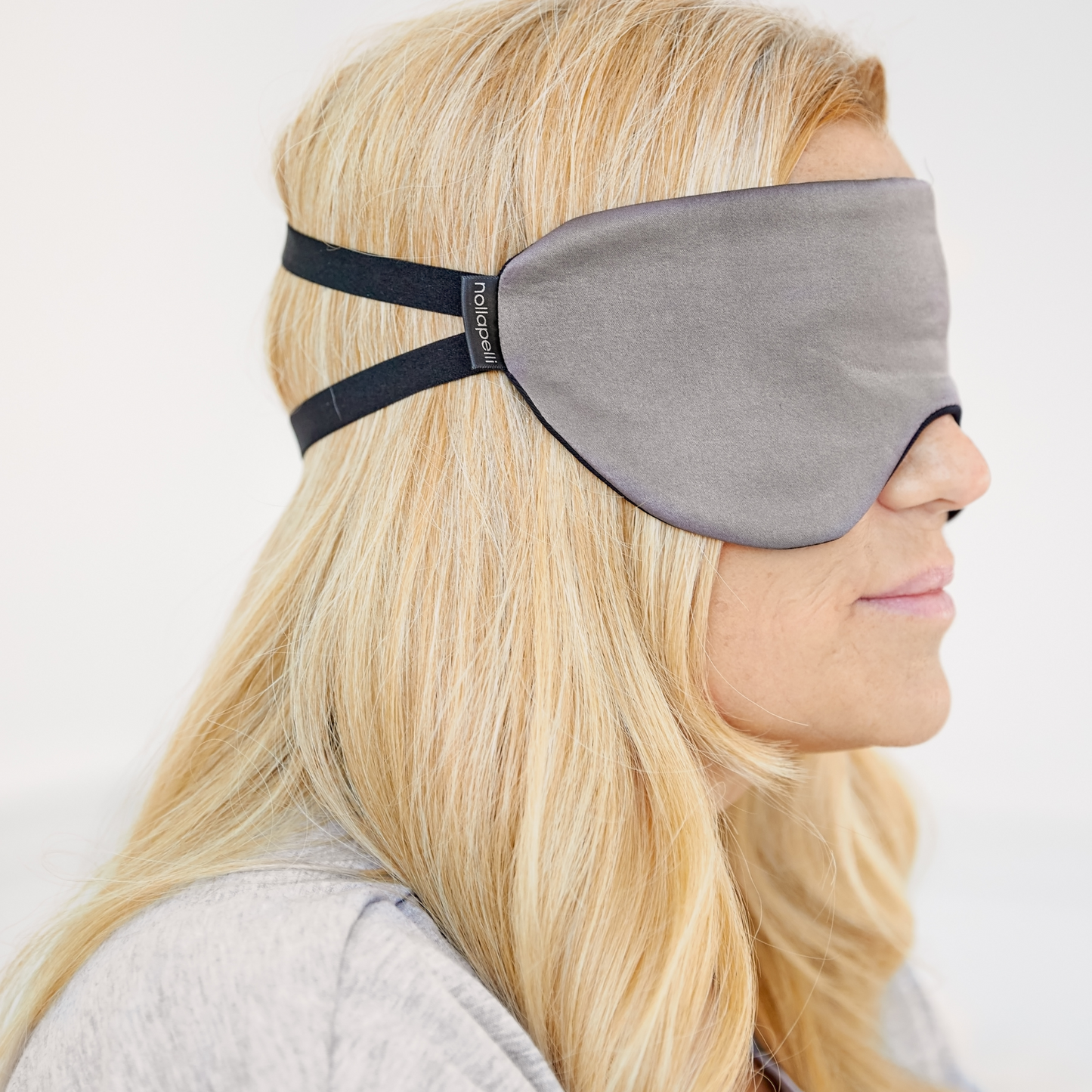
Katie Stewart, a yoga nidra expert, reveals the common fallacies around the meditative practice and how to harness it for sleep.
When I first heard about yoga nidra, I was hooked. Known as “yoga of conscious sleep,” it’s a multi-step process designed to achieve the deepest state of relaxation while maintaining full consciousness. Yoga Nidra Meditation: The Sleep of the Sages by Pierre Bonnasse, explains yoga nidra as seeking “to combine deep relaxation with attentive awareness in order to consciously explore the states of wakefulness, dream and deep sleep.” Sounds peaceful and hypnotic, right? Sign me up.
After chatting with Katie Stewart, a psychologist and yoga instructor trained in iRest® Yoga Nidra, turns out, I had it all wrong (!). Katie set the record straight about yoga nidra and how to harness its powers for sleep.
Belief #1 debunked | Yoga nidra does not replace sleep
Katie shouted from the rooftops, “It [yoga nidra] is a beautiful, restorative, restful practice but we can’t use it to replace sleep. We need both.”
Because yoga nidra brings us to the edge of sleep, it is easy to think it can substitute sleep. Here at Nollapelli, we understand that quality sleep rejuvenates us and is critical for our skin health and overall wellbeing, therefore, it cannot be replaced. Yoga nidra simply allows us to explore the realm of consciousness from a calm, receptive position that can prepare us for sleep, not replace it.
Belief #2 debunked | Yoga nidra is not just an ancient practice, it is backed by science
Yoga nidra originated from Indian philosophies with roots in Hinduism, Buddhism and Tantrism. However, yoga nidra does not live only in the alternative health category. Its positive effects on the mind and body are backed by research. Around the 1960s, health professionals started studying yoga nidra and its benefits. Some recent studies summarized here include the benefits of yoga nidra for managing mental health including anxiety and depression, physical health, insomnia and more. No one can roll their eyes at that.
Belief #3 debunked | Yoga nidra does not deflect anxieties, it absorbs them
Like our skin, yoga nidra is porous.
The practice helps to balance and neutralize stressors by absorbing them into our body and mind, then releasing them. Sounds like our Nollapelli sheets which regulate moisture, temperature, and friction at night for healthier skin and better sleep. “We are not impermeable; our skin is not impermeable,” said Katie. “Our job in yoga nidra meditation is to let it come in and let it come out, and not attach to it.” Accepting the day’s stressors, but not connecting to them, gives us a sense of freedom. Freedom is calming. It sets the stage for quality sleep and allows us to accept exactly who we are at that moment.
Belief #4 debunked | Yoga nidra is not a quick fix
Yoga nidra is a practice, 30 minutes to find deep relaxation in your mind, body, and soul. Katie specializes in iRest® Yoga Nidra, a 10-step protocol outlined below:
- Connect to Your Heartfelt Desire
- Set an Intention
- Find your Inner Resource
- Feel Your Body
- Become Aware of Your Breath
- Welcome Your Emotions
- Witness Your Thoughts
- Experience Joy
- Find Lasting Peace
- Reflect On Your Practice
There are various forms of yoga nidra, and Katie encourages anyone starting out to find a local class or professional instructor to properly introduce the practice.
Belief #5 debunked | Yoga nidra is not hypnotic, but it’s better
Yoga nidra is not hypnotic, but in fact, dives deeper. “In terms of sleep stages and brain waves,” said Katie, “yoga nidra will go deeper than hypnosis.” In hypnosis, the hypnotherapist controls the process, whereas, in yoga nidra, your teacher is merely a facilitator. You are the captain of your practice. 
Belief #6 debunked | Yoga nidra is not always blissful
The idea that yoga nidra is always a relaxing experience is not true. As Katie explained, calm feelings are a wonderful byproduct but can be challenged during a practice. “We lie down and whatever we need to see in that moment starts to come up,” said Katie. Yoga nidra meditation brings our current feelings, imagery, and memories to the forefront for us to sit with. It is not always comfortable because life is not always comfortable. “What we learn through the practice is that we don’t need to control it, we don’t need to fix it, we fall back into awareness and see where this resonates.” Yoga nidra helps us meet any feeling with a sense of calm and not allow it to affect our sleep.
Yoga Nidra is as much about awareness as it is about deep relaxation, a key component to a good night’s rest. With a complete understanding of yoga nidra, we can harness the benefits for a better night’s sleep and find comfort and safety in our own skin, just as it is.
////
Key Takeaway
Relaxation, raising consciousness, and better sleep are all practices. A key component to practicing is where your practice, or the environment. Practice your 10 iRest yoga nidra steps in our super soft, ultra smooth, cool-and-cozy bedding designed with skin science in mind. Rest your body and mind from the outside in.








